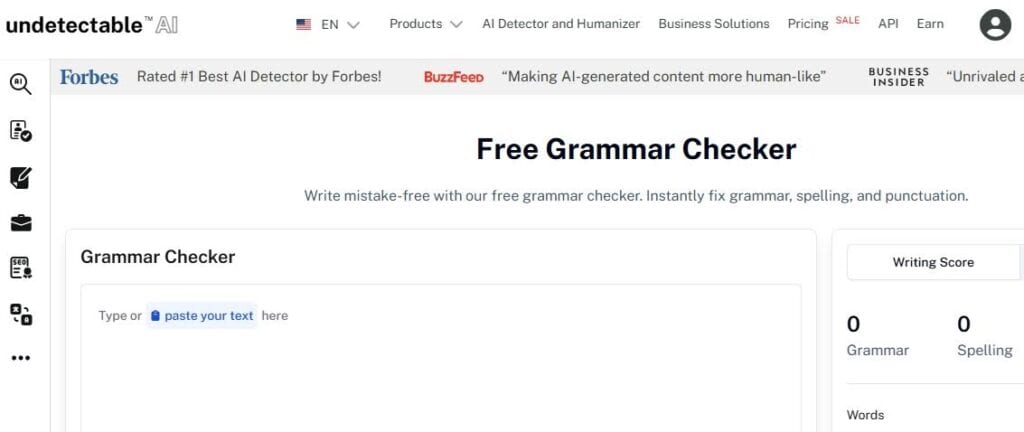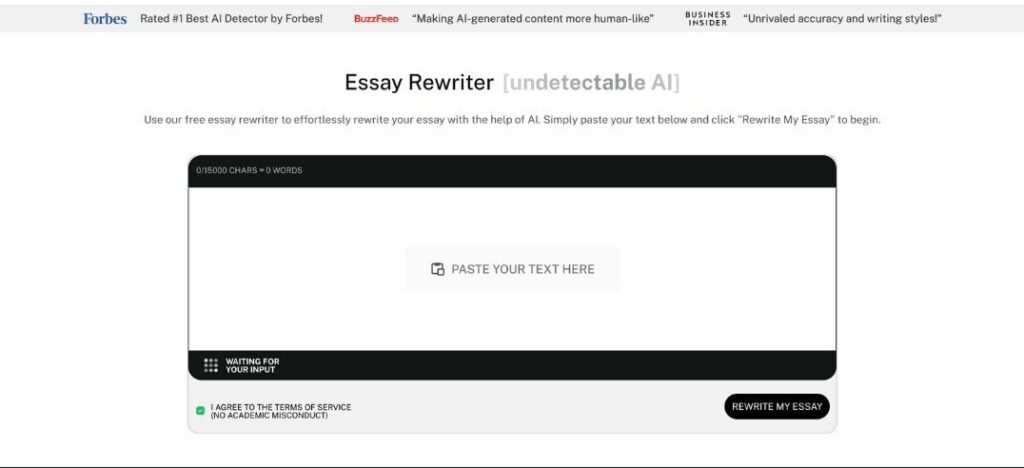So many elements of writing that affect your reader’s interest. Some may argue that deviating from grammar rules is the culprit, while others will pinpoint the content of the story itself.
But one thing seems to be an agreeable force within the writing community: when it comes to storytelling, passive voice is often the silent killer of compelling prose.
You’ve probably heard the advice “avoid passive voice” thrown around like confetti at a grammar party. But the thing is that most writers don’t actually understand what passive voice misuse looks like.
They just know they’re supposed to hate it.
The truth is more nuanced. Passive voice isn’t inherently evil.
But when you misuse it, your writing can potentially become weak and confusing.
Learning to spot and fix passive voice misuse will make your writing much more engaging.
Key Takeaways
Before we get into the weeds, here’s what you need to know:
- Passive voice shifts focus from the doer to the action or recipient.
- Misusing passive voice creates unclear, wordy, and weak sentences.
- Active voice typically creates stronger, clearer writing.
- Passive voice has legitimate uses in scientific writing, especially when the actor is unknown.
- Recognizing the pattern “object + be verb + past participle” helps identify passive constructions.
- Tools like grammar checkers can help spot excessive passive voice in your drafts.
What Is Passive Voice?
Passive voice is a grammatical construction where the subject of the sentence receives the action rather than performing it.
Instead of the subject doing something, something is being done to the subject.
In active voice, the subject is the star of the show. In passive voice, the subject sits in the audience while the action happens around them.


Never Worry About AI Detecting Your Texts Again. Undetectable AI Can Help You:
- Make your AI assisted writing appear human-like.
- Bypass all major AI detection tools with just one click.
- Use AI safely and confidently in school and work.
Here’s a simple example:
- Active: “Sarah baked the cookies.”
- Passive: “The cookies were baked by Sarah.”
Notice how the focus shifts? In the active sentence, Sarah takes center stage. In the passive sentence, the cookies become the star while Sarah gets relegated to a supporting role.
Passive Voice in Grammar vs Style Guides
Grammatically speaking, passive voice is perfectly correct. Your high school English teacher wasn’t lying when they marked it as acceptable grammar.
But style guides? That’s a different story.
Most modern style guides discourage excessive passive voice because it often weakens writing.
The AP Stylebook, Chicago Manual of Style, and virtually every writing handbook emphasize active voice for good reason.
The disconnect happens because grammar rules tell us what’s correct, while style guides tell us what’s effective.
You can write a grammatically perfect sentence in passive voice that puts your readers to sleep.
Grammatical Structure: Object + Be Verb + Past Participle

Understanding the mechanics helps you spot passive voice in the wild. The formula is surprisingly simple:
Object + Form of “be” + Past participle
Let’s break this down:
- Object: The thing receiving the action
- Form of “be”: am, is, are, was, were, being, been
- Past Participle: Usually ends in -ed, but irregular verbs vary
Examples of Passive Sentences
Here are some passive constructions you might recognize:
- “The report was written by the intern.”
- “Mistakes were made during the project.”
- “The decision has been postponed until next week.”
- “The new policy is being implemented across all departments.”
Each sentence follows that object + be verb + past participle pattern. The focus lands on what happened rather than who made it happen.
Passive vs Active Construction
The difference becomes crystal clear when you compare them side by side:
Passive: “The budget was approved by the board.”
Active: “The board approved the budget.”
Passive: “The presentation is being prepared by our team.”
Active: “Our team is preparing the presentation.”
Passive: “Errors were discovered in the data analysis.”
Active: “We discovered errors in the data analysis.”
See the pattern? Active voice cuts straight to the point. Passive voice takes the scenic route.
What Is Passive Voice Misuse?
Not all instances of passive voice have the same effect. Sometimes it’s downright necessary.
But passive voice misuse? That’s when passive constructions hurt your writing instead of helping it.
Misuse happens when passive voice makes your writing unclear, wordy, or weak without serving any purpose.
It’s like using a hammer to paint a wall. Technically possible, but completely wrong for the job.
When Passive Voice Obscures the Subject
The biggest problem with passive voice misuse is when it hides who’s actually responsible for an action. Politicians love this trick.
Consider: “Mistakes were made during the campaign.”
Who made the mistakes? We have no idea. The passive construction lets the guilty party slip away into the shadows. This isn’t a stylistic choice anymore; it’s deliberate obscurity.
Compare that to: “The campaign manager made critical mistakes that cost us the election.”
Suddenly, we know exactly who messed up. The sentence has accountability and clarity.
When It Weakens Clarity or Impact
Sometimes passive voice just sucks the life out of your sentences. It turns dynamic actions into lifeless descriptions.
- Weak passive: “The new product was launched by the company to great fanfare.”
- Strong active: “The company launched their new product to great fanfare.”
The active version has energy. It shows the company taking action. The passive version makes the launch feel like something that just happened, without any human agency behind it.
Passive Voice as a Sign of Poor Style
Excessive passive voice often signals broader writing problems. It’s a symptom of unclear thinking, weak confidence, or trying to sound more “academic” than necessary.
Many writers slip into passive voice when they’re not sure who should take responsibility for an action. Instead of figuring it out, they hide behind passive constructions.

This is where tools become invaluable. Undetectable AI’s Grammar Checker can spot these patterns in your drafts and flag excessive or inappropriate passive constructions before they weaken your final piece.
Common Situations of Passive Misuse
Passive voice misuse shows up in predictable places. Knowing these trouble spots helps you stay vigilant.
- Academic writing: Students often think passive voice sounds more scholarly. “The hypothesis was tested” feels more official than “We tested the hypothesis.” But unless you’re writing a scientific paper with specific conventions, active voice usually works better.
- Business communication: Corporate speak loves passive voice. “The project was delayed” sounds less confrontational than “Management delayed the project.” But this diplomatic language often creates confusion about responsibility.
- News reporting: Journalists sometimes use passive voice to avoid naming sources or to seem objective. “The policy was criticized” tells us nothing about who’s doing the criticizing.
- Creative writing: Beginning fiction writers often use passive voice when they’re not sure how to show action clearly. “The door was opened” instead of “Maria opened the door” removes the human element from the scene.
How to Recognize Passive Voice
Spotting passive voice gets easier with practice. Here’s your detection toolkit:
Look for the formula: Object + be verb + past participle. If you see this pattern, you’ve likely found passive voice.
Ask “by whom?”: If you can add “by someone” to the end of the sentence and it makes sense, you’re dealing with passive voice.
Check for missing actors: If the sentence doesn’t clearly show who’s performing the action, passive voice might be the culprit.
Watch for “be” verbs: Am, is, are, was, were, being, been often signal passive constructions when paired with past participles.
When you’re unsure, Undetectable AI’s Ask AI can check if a sentence is passive and explain exactly how to make it active. It’s like having a grammar expert looking over your shoulder.
Passive Voice vs Active Voice
The difference between passive and active voice goes beyond grammar. It affects how your readers experience your writing.
Structure and Clarity Compared
Active voice follows a straightforward pattern where the subject performs an action on an object. “The chef prepared the meal.”
Passive voice flips this. The object receives the action from the subject. “The meal was prepared by the chef.”
Active voice creates immediacy. Readers know immediately who’s doing what. Passive voice creates distance. Readers have to work harder to understand the relationships between actors and actions.
Tone, Authority, and Readability Differences
Active voice sounds confident and direct. “I recommend this approach” carries more weight than “This approach is recommended.”
Passive voice can sound evasive or uncertain. When you write “Errors were found in the report,” you’re not taking ownership.
When you write “I found errors in the report,” you’re stepping up and claiming responsibility.
Excessive passive voice also affects readability. Those extra words add up. “The decision was made by the committee” uses seven words to say what “The committee decided” says in four.
When Active Voice Is Stronger
Active voice dominates in most modern writing contexts:
- Marketing copy: “Our software increases productivity” is more persuasive than “Productivity is increased by our software.”
- Instructions: “Click the save button” is clearer than “The save button should be clicked.”
- Storytelling: “The detective solved the case” creates more engagement than “The case was solved by the detective.”
- Persuasive writing: “Studies prove this method works” sounds more convincing than “This method has been proven to work by studies.”
When Passive Voice Is Actually Okay
As mentioned many times earlier, passive voice isn’t always the villain. Sometimes it’s exactly what your writing needs.
Scientific and Objective Writing
Scientific research papers often use passive voice to emphasize procedures and results over researchers. “The samples were analyzed” focuses on the process rather than the person doing the analysis.
This convention exists for good reasons. Scientific writing aims for objectivity.
When the methodology matters more than who performed it, passive voice serves the purpose.
When Actor Is Unknown or Unimportant
Sometimes you genuinely don’t know who performed an action, or it doesn’t matter for your story.
“The building was constructed in 1923” works fine when the architect’s identity isn’t relevant to your point.
“The car was stolen last night” makes sense in a police report when the thief’s identity is unknown.
When You Want to Emphasize the Object
Passive voice can strategically shift emphasis to what you want readers to focus on.
“The Mona Lisa was painted by Leonardo da Vinci” emphasizes the famous painting over the artist. If you’re writing about the artwork itself, this focus makes sense.
“The new policy was announced yesterday” puts the spotlight on the policy rather than who announced it.

When you need to convert unclear passive-heavy paragraphs into clearer, more direct writing, Undetectable AI’s AI Essay Rewriter can help transform your passive constructions into active voice while maintaining your intended meaning.
Passive Voice and Tone of Voice
Here’s something most writing guides miss: passive voice affects your brand voice and personality on the page.
Active voice sounds confident, decisive, and human. Passive voice sounds bureaucratic, distant, and corporate.
Compare these email openings:
- Passive tone: “Your request has been received and will be processed by our team.”
- Active tone: “We received your request and our team will process it today.”
The active version sounds like a human wrote it. The passive version sounds like it came from a robot.
This matters more than you might think. In our content-saturated world, readers crave authenticity.
They want to feel like they’re communicating with real people, not corporate machines.
Your choice between active and passive voice signals whether you’re confident in your message or hiding behind formal language.
It tells readers whether you take ownership of your ideas or prefer to stay safely anonymous.
For personal brands, blogs, and most business communication, the active voice builds trust and connection.
However, for formal reports, scientific papers, and situations requiring diplomatic language, the passive voice might serve you better.
Be sure to explore our AI Detector and Humanizer in the widget below!
Stop Hiding Your Verbs
Passive voice isn’t bad. It’s just often misused.
Overusing it can make writing vague, wordy, or dull, while active voice keeps sentences clear and engaging.
The goal isn’t to banish passive voice, but to use it with intention and only when the actor is unknown, unimportant, or when the object deserves focus.
Read your work aloud, spot patterns, and choose the voice that best serves your message.
With Undetectable AI’s Grammar Checker and AI Essay Rewriter, you can quickly spot and adjust passive-heavy sentences, turning them into crisp, active ones.
Undetectable AI’s tools can rewrite sentences into active voice while preserving your meaning, making your prose stronger and more compelling.
Try Undetectable AI today and see the difference in your writing.
